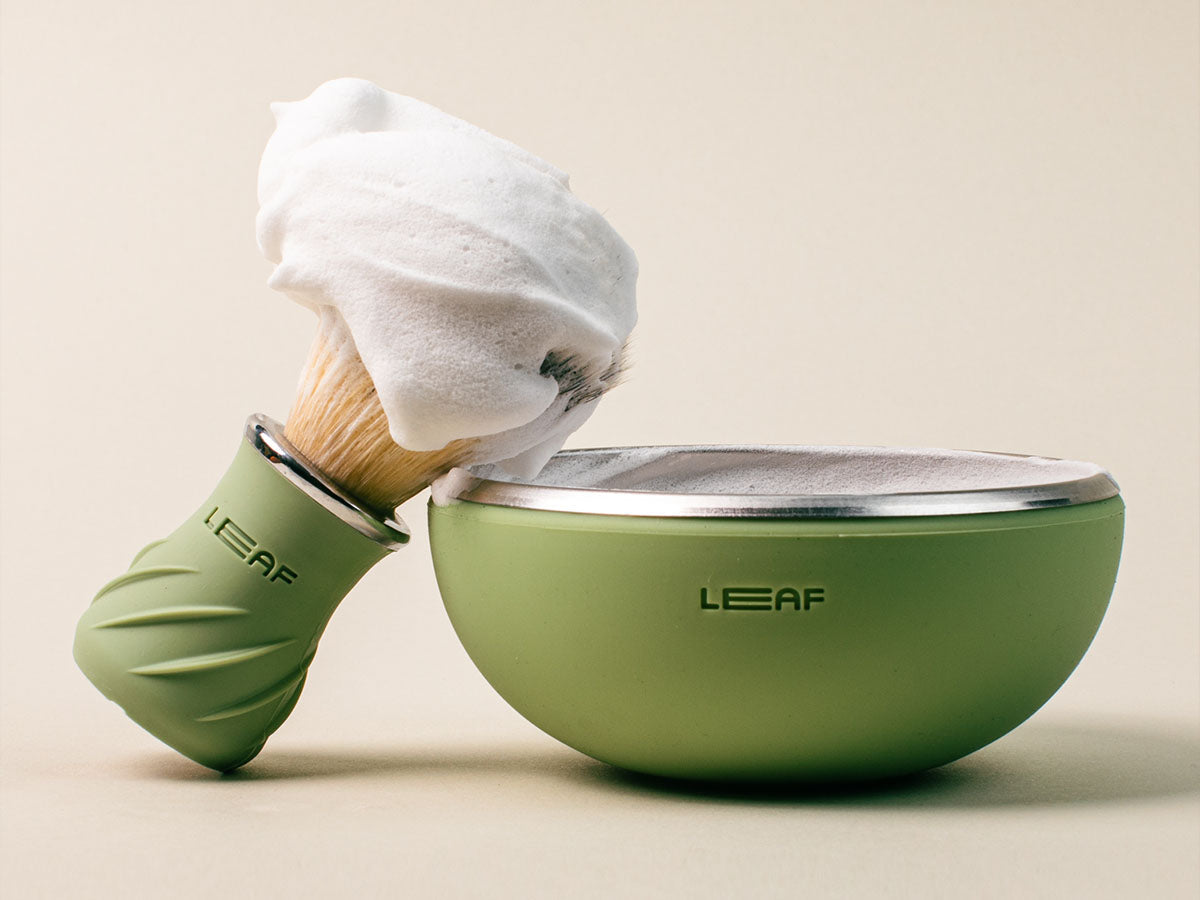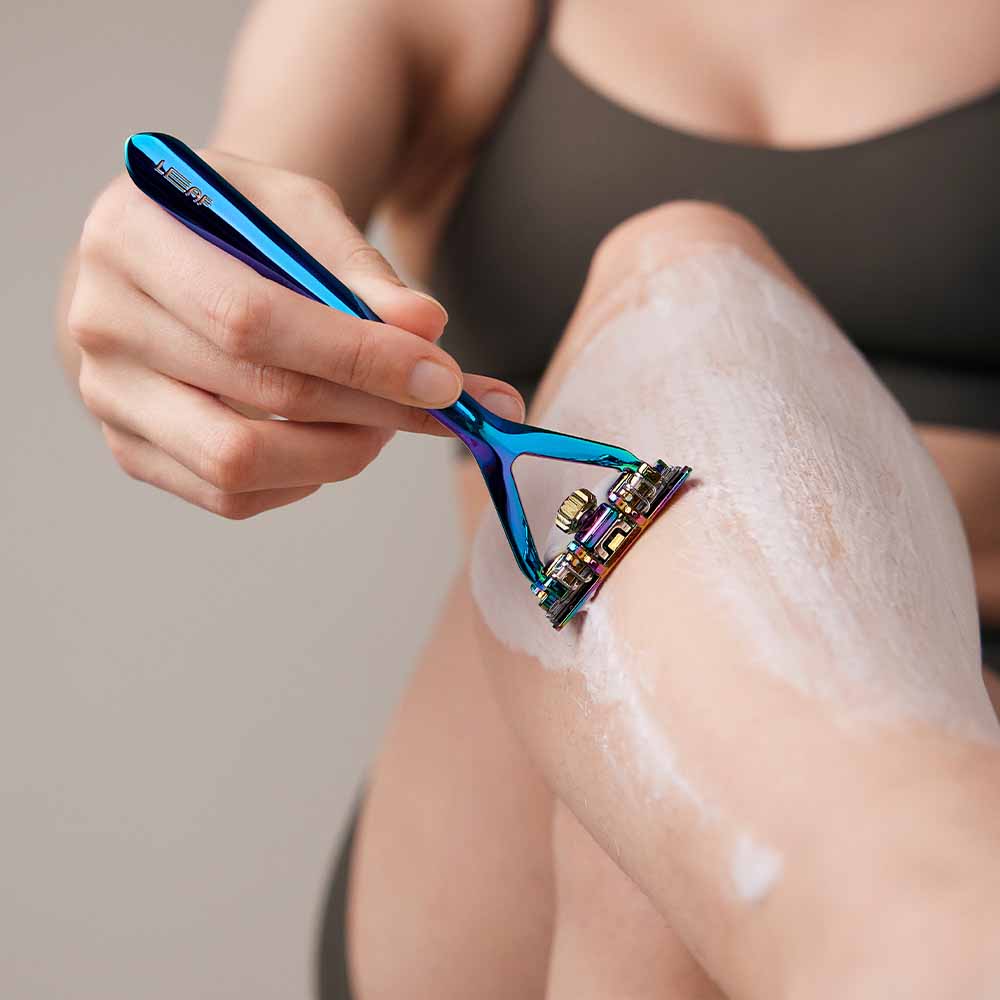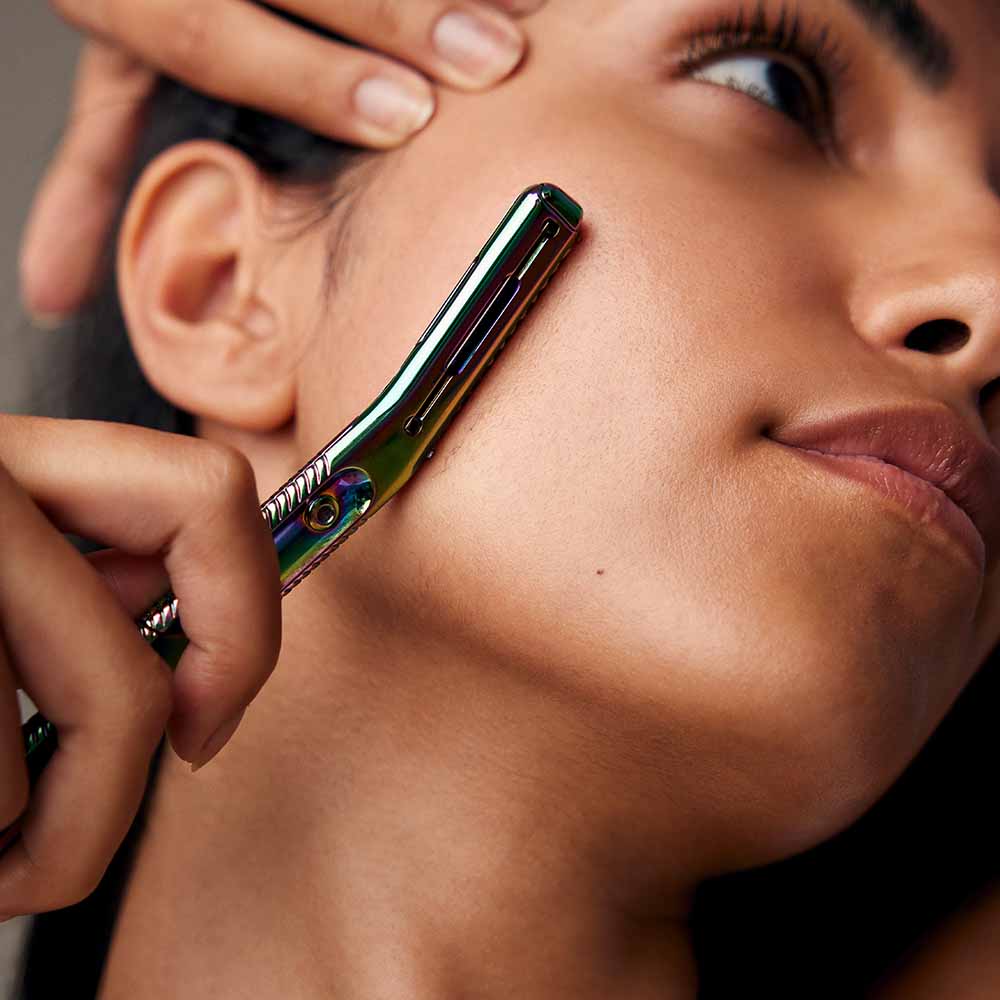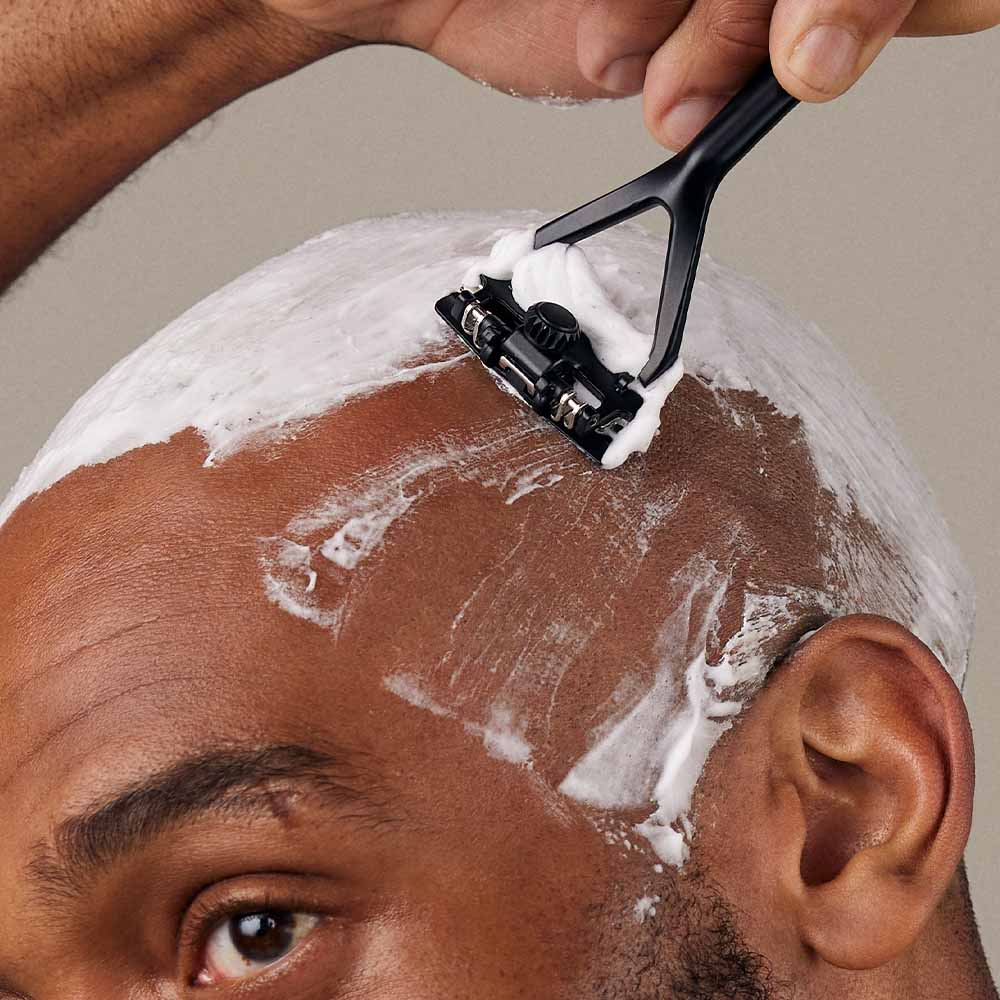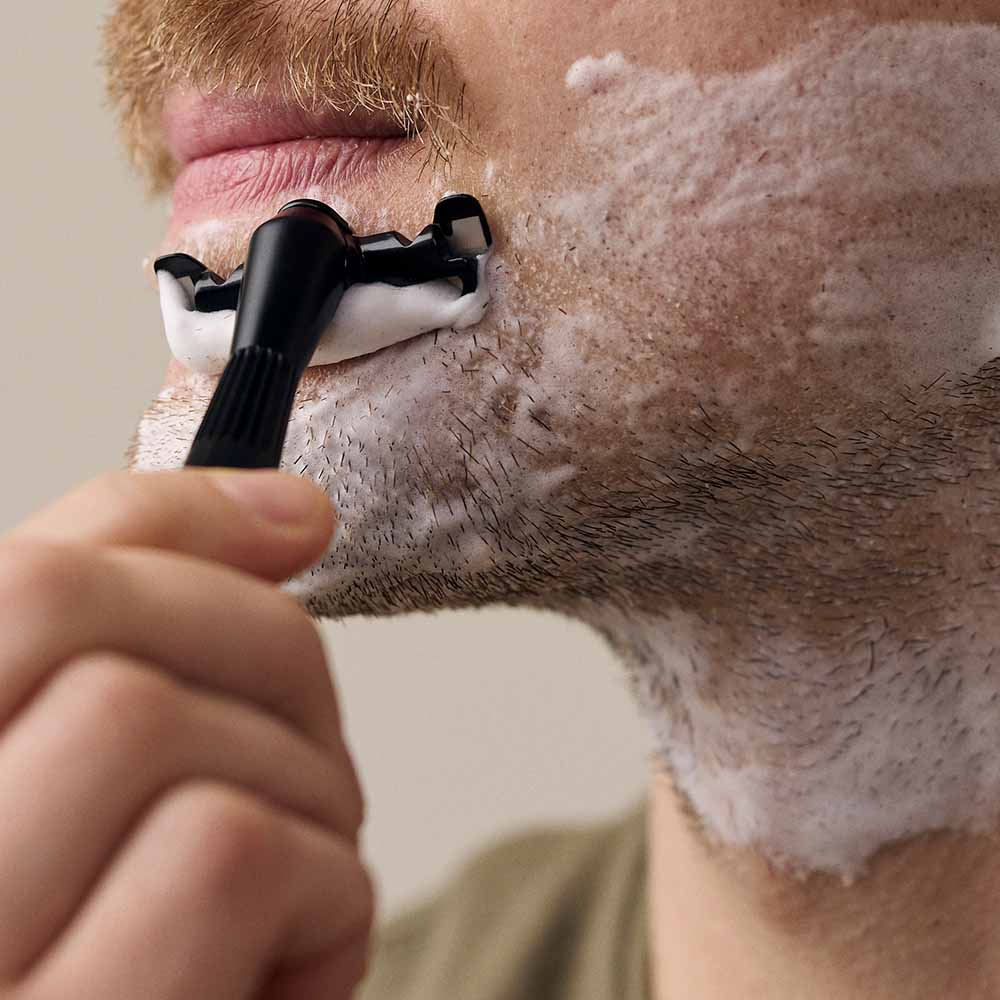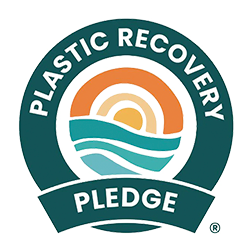Shaving with a brush and bowl might seem old-fashioned, but there’s very real reasons this method deserves your attention. And it’s all about getting the best shave.
- Improve lather quality
- Better protect your skin
- Decrease ingrown hairs
Lifting Hairs and Preventing Ingrown Hairs
One of the key advantages of using a shave brush is how it prepares your hair and skin for shaving. When you use a brush to apply lather, the bristles work to lift and separate the hair.
Instead of lying flat against your skin, the hair stand up from your skin, which allows your razor to shave them more cleanly. This can reduce the likelihood that hair will grow back below the skin surface.
A common root (pun!) cause for ingrown hairs is when cut hair curls back into the skin or get trapped under dead skin. By lifting the hair in pursuit of a better shave, a brush makes it less likely to turn shaved-hair into an ingrown-hair.
To take advantage of this benefit simply apply your lather using the brush itself to swirl against your skin. This gives a slight “massage” effect that lifts and readies hair.
Dermatologists often recommend regular exfoliation to prevent ingrowns–using a shave brush is an easy way to build a gentle-exfoliation step into your routine.
Better Cushion, Glide, and Protection
The quality of your lather can make or break your shave. A thin, airy foam might leave your skin vulnerable to the blade, whereas rich, creamy lather cushions and protects your face. Using a shave brush and bowl helps you create that optimal lather consistency – thick, creamy, and slick – which provides superior cushioning and glide for the razor.
It also supports skin hydration while creating that buffer between the blade and your skin. When you whip up a proper lather (with water, shave soap or cream, and air), you’re essentially creating a layer of billions of tiny soap bubbles and moisturizers that coat your skin.
This layer acts like a pillow or shock absorber for the razor. Dermatologists advise never to shave on bare skin – you should “always use a moisturizing shaving cream” to protect the skin while shaving.
The difference in glide is immediate. When your razor moves through a well-cushioned lather, you’re far less likely to end up with redness, burning, or that tight, dry feeling after shaving.
Canned foams can dry out quickly once applied, but a well-made bowl lather should stay hydrated and slick on your skin.
This keeps your skin protected all the way through the shave. For those with sensitive or dry skin, using a high-quality shaving soap or cream with a brush can actually be less drying and more nurturing than using a typical aerosol shaving foam.
The Science of Lathering: How a Brush Creates Superior Foam
Using a shave brush unleashes your inner-chef, combining water, air, and soap into a perfect emulsion.
When you swirl a damp brush on a bar of shave soap, the bristles agitate the soap and start to incorporate air and water into it. Essentially, each stroke of the brush whips air into the soap, creating bubbles – just like beating egg whites with a whisk forms meringue.
From a chemistry standpoint, what the brush's hundreds of bristles are doing is creating an emulsion of water and soap, and a suspension of air within that. The soap has fatty acids that stabilize bubbles (that’s what soap does best), and the mechanical action of the brush makes those bubbles finer and finer with more mixing.
This is going to work far better than your fingers could. (Imagine trying to whisk egg whites with your hand instead of a whisk – the tool makes a huge difference.)
The result is a lather with very fine, densely packed bubbles.
If you lather properly, you’ll notice the mix in your bowl roughly doubles or triples in volume and becomes a shiny, meringue-like cream. This structured lather clings to your face in a rich layer, rather than a frothy foam that might run or dissipate.
Lathering Shave Bar vs. Canned Shaving Cream
Eco-Friendliness: Less Waste, More Sustainability
Aerosol cans pile up in landfills, contain chemical propellants, and require excessive packaging. In contrast, shave soaps last longer, have minimal, recyclable packaging, and eliminate plastic waste. One brush will last many years, while canned foam results in repeated single-use waste. Switching to a brush and soap dramatically reduces your shaving footprint.
Better Ingredients, Healthier Skin
Canned shave foams often contain propellants, harsh surfactants, and alcohols that strip moisture and irritate skin. Many traditional shave soaps are made with natural oils, glycerin, and butters that hydrate and protect. Glycerin helps skin retain moisture, while canned foams tend to dry out faster. If you have sensitive or dry skin, a shave soap + brush routine will be noticeably less irritating.
Superior Lather = Better Shave
Foams and squeeze tube gels create airy, unstable foam that lacks density, leading to less cushioning and glide. Brush-lathered soap produces thicker, richer microfoam that stays hydrated longer, cushions the blade, and reduces irritation. Plus, the act of lathering with a brush lifts hairs and preps the skin better, leading to a closer, smoother shave.
Performance Over Convenience
Squeeze or spray and go is quick, but brush lather is more customizable, effective, and enjoyable. A minute of extra effort results in better protection, hydration, and a superior shave experience—without waste or unnecessary chemicals. If you want the best shave possible, the extra step is worth it.
Happy shaving! And don't forget to shop the all-new Leaf Shave Bowl and Brush Set.


